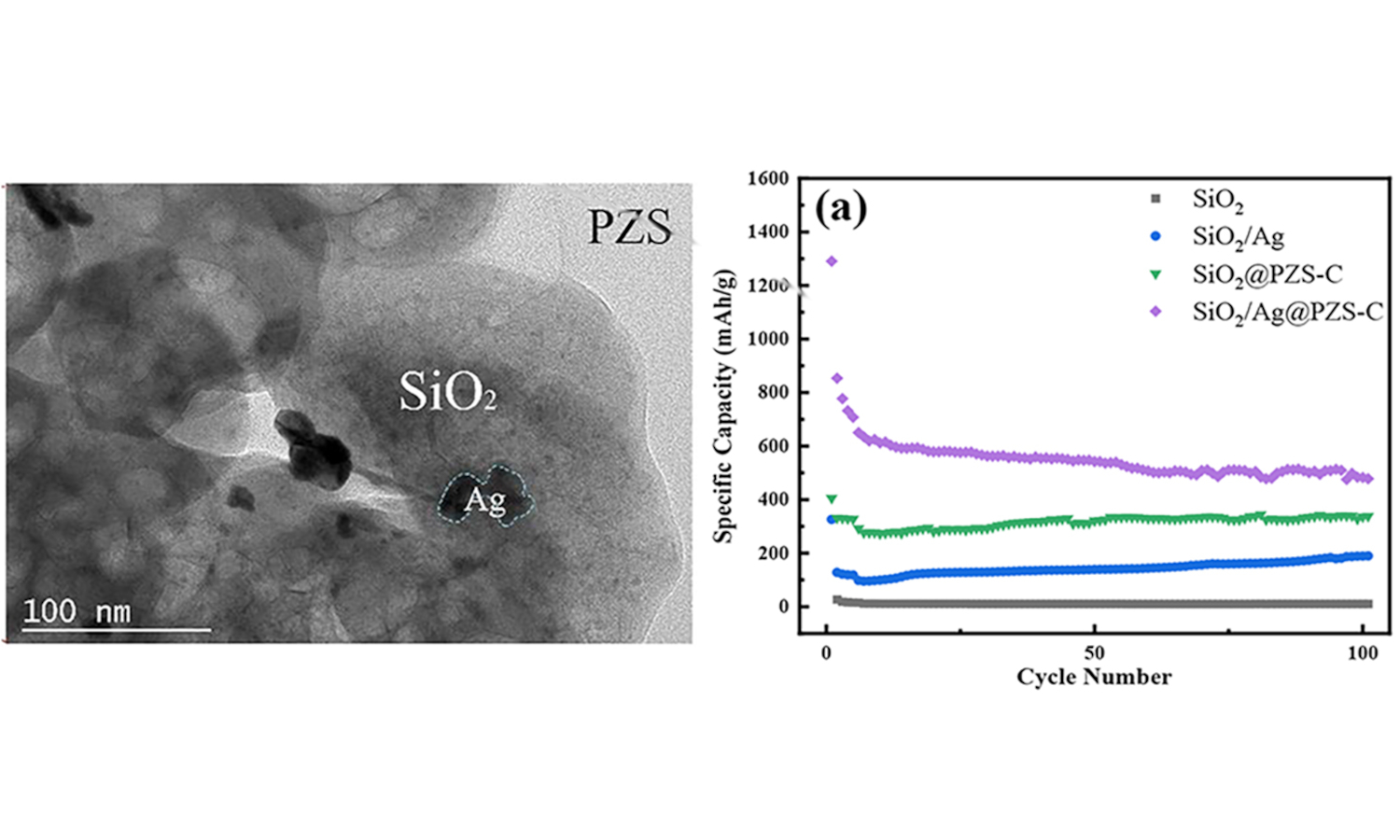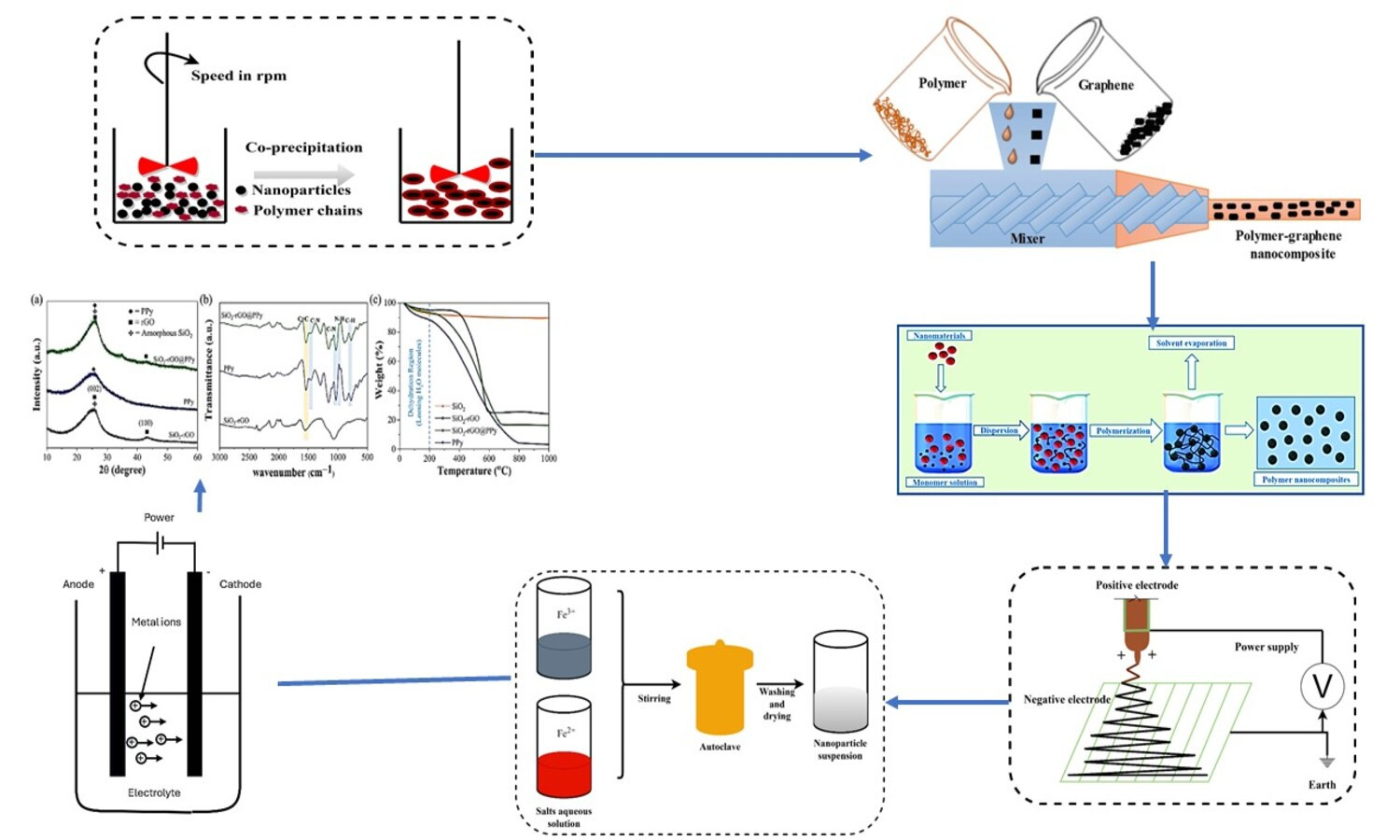Preparation and lithium storage performance of SiO2/Ag composite materials coated with polyphosphazene
Vol. 18., No.10., Pages 976-990, 2024
DOI: 10.3144/expresspolymlett.2024.75
DOI: 10.3144/expresspolymlett.2024.75
GRAPHICAL ABSTRACT

ABSTRACT
Lithium-ion batteries (LIBs) are widely used as important energy storage and energy supply devices. The porous design and heteroatomization modification of carbon-based anode materials are crucial for achieving high-capacity and reversible energy storage in LIBs. Sol-gel method and pyrolysis treatment were used to obtain silica/silver composite particles used as templates. Polyphosphazene-coated silica/silver composite composite carbon materials (SiO2/Ag@PZS-C) were synthesized through in-situ self-assembly and carbonization of polyphosphazene. The electrochemical behavior and lithium storage mechanism of SiO2/Ag@PZS-C was also studied. The results reveal that the composite exhibited high specific capacity, stable cycling and superior rate performance. The double modification of silver nanoparticles and polyphosphazene carbon significantly improves the conductivity of silica and reduces the volume change. Moreover, the carbon shell of polyphosphazene facilitated the formation of a stable solid electrolyte interface film (SEI), preventing direct contact between the active material and the electrolyte, thereby substantially enhancing lithium storage performance.
RELATED ARTICLES
Mathew Olurotimi Adeoti, Tamba Jamiru, Taoreed Adesola Adegbola, Ibrahim Suleiman, Mohammed Abdullahi, Basiru Philip Aramide
Vol. 19., No.2., Pages 208-229, 2025
DOI: 10.3144/expresspolymlett.2025.16
Vol. 19., No.2., Pages 208-229, 2025
DOI: 10.3144/expresspolymlett.2025.16

Polymer nanocomposites are drawing considerable interest in electrical energy storage research owing to their distinctive characteristics and promising roles in various devices, such as batteries, supercapacitors, and fuel cells. This review examines the selection criteria of polymer nanocomposites for electrical energy storage applications and the current advancements in developing and producing polymer nanocomposites specifically tailored for electrical energy storage applications. Key topics covered include the selection of polymer matrices, choice of nanofillers, fabrication techniques, characterization methods, and performance evaluation of the resulting nanocomposites. The impact of nanofiller dispersion, interface engineering, and morphology control on electrical storage properties is emphasized. Proper dispersion enhances uniformity and interfacial interactions, improving electrical, mechanical, and thermal properties. Interface engineering boosts polymer-nanofiller compatibility, while morphology control optimizes nanofiller structure and arrangement for better storage efficiency. Emerging trends, challenges, and future research directions are also discussed, providing insights for developing advanced polymer nanocomposites with improved electrical energy storage capabilities.




